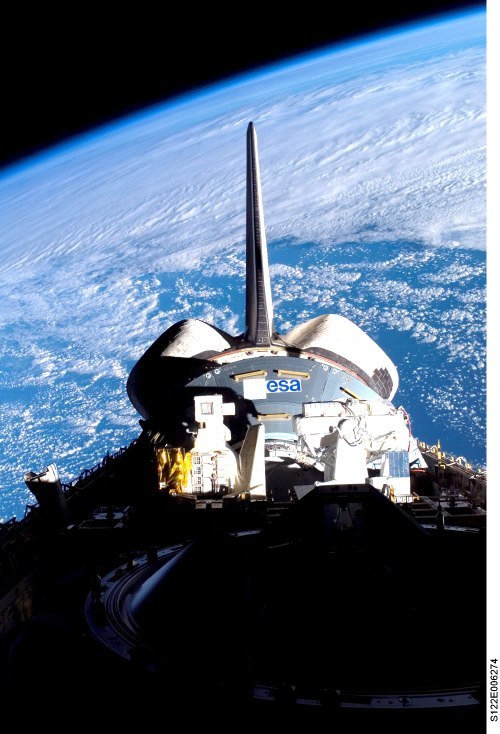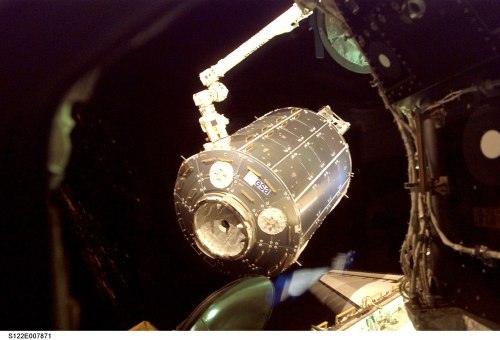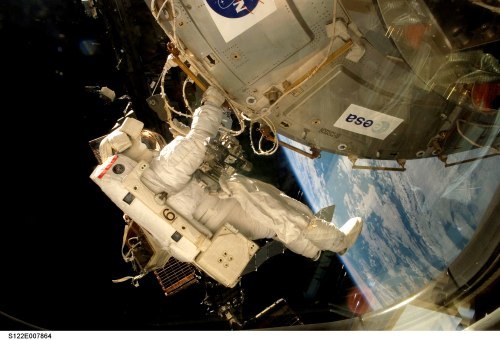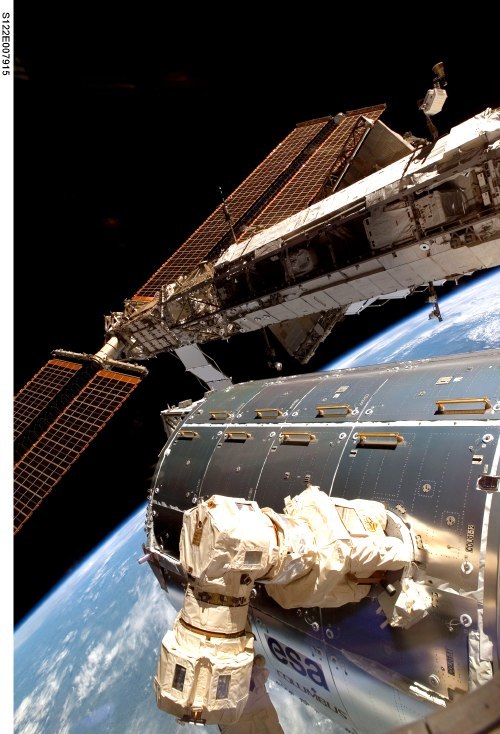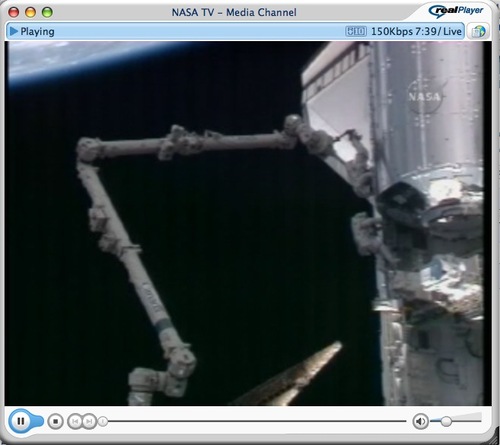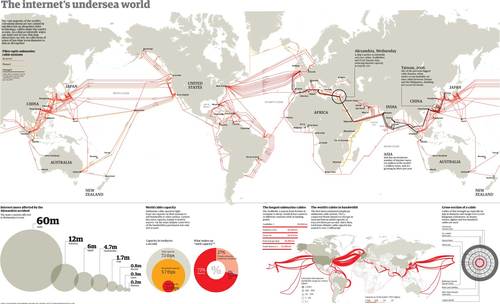This was February 2008 | « January 2008 | Main | March 2008 »
Craig Venter @ The Long Now
Posted on Wednesday, February 27, 2008
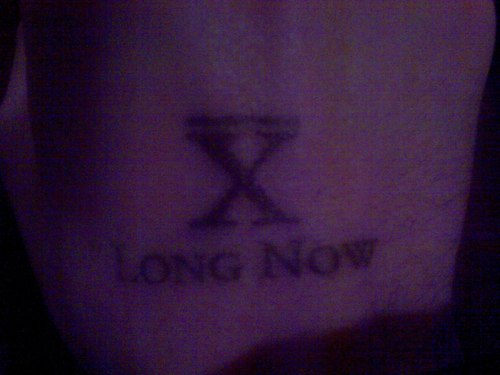
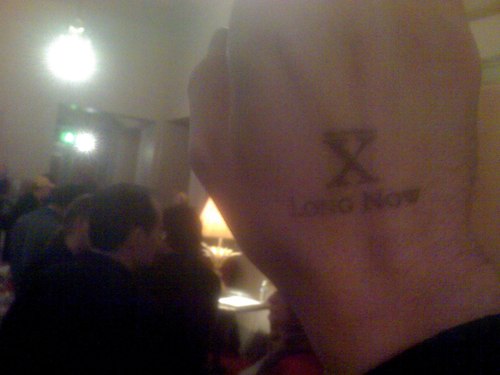
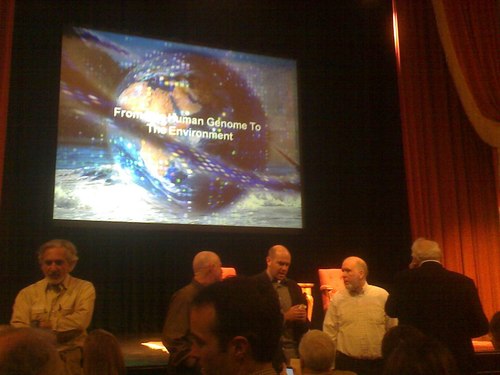
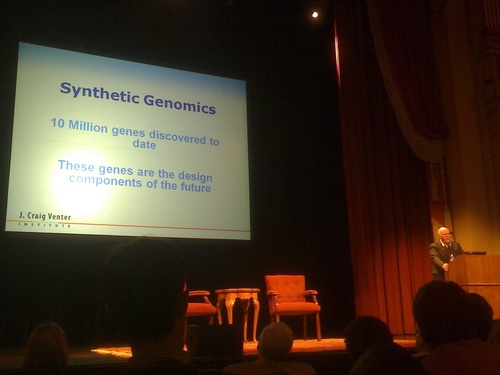
After watching online seminars for over a year now, yesterday I finally got a chance to visit a Long Now seminar in person down in San Francisco. And guess what..!? I was on their guest list ;-) Ever since I learned about The Long Now Foundation over a year ago, I've been a fan. So when I was offered a chance to become a charter member last year, I didn't hesitate. Even got me one of those metal plates the size of a credit card. Plus my name on their guestlist. #518 I am.
So here I was, first choice in seating, amongst all those people I've been learning about by reading a wide variety of blogs over the years: Kevin Kelly, Peter Schwartz, John Brockman, Stewart Brand, Chris Anderson etc. Having arrived in the US only a few days ago, I was clever enough to take my camera battery charger with me while jumping in my car here in Mountain View to head over to SF, only forgetting to realise it only has a European plug. With the battery depleted before arrival in San Francisco (driving the 101 makes for perfect filming scenery ;-), I was left with only my Sony Ericsson P990i phone camera to make some snapshots of the lecture and the audience. Overall, Craig Venter was pretty straightforward in his view on the coming age of biotech. Or, as Stewart Brand put it in his short summary emailed around after the event:
To really read DNA accurately and understand it thoroughly, you need to be able to write it from scratch and make it live, Venter explained.
His sequencing the first diploid human genome (with the genes from both parents) last year showed there is much more genetic variation between humans than first thought. His current goal is to fully sequence 10,000 humans and bring the price for each sequence down to $1,000. With that data, his says, "We'll begin to really learn what's nature and what's nurture."
"Microbes make up one half of the Earth's biomass." Venter's shotgun sequencing of open-ocean microbial samples revealed that every milliliter of ocean has one million bacteria and archaea and ten million viruses even in supposedly barren waters. Taking samples on a round-the-world sailing trip showed that every 200 miles the genes in the microbes are 85% different.
"Microbes dominate evolutionary diversity," Venter said. Some 50,000 major gene familes have been discovered. Humans and other complex animals have a small fraction of that in our own genes, but the "microbiome" of our onboard microbes carry the full richness. Only 1/10th of the cells in a human are human; the rest are microbes. There are 1,000 species in our mouths, another 1,000 in our guts, another 500 on our skins, and those with vaginas have yet another 500 species.
Analysis has shown that a tenth of the chemicals used in our body come to us via our gut microbes. "We are what we feed our bacteria and what they give us."
In an effort to determine what is the minimum gene set for life, Venter's team took a 500-gene bacteria and began knocking out genes. They got the viable set down to 400 and realized that the only way they are going to understand the complexity is by mimicking it. They would need to synthesize a working genome artificially, first on a computer and then with assembled base pairs and "boot it up" in a living cell, making a new, unique species. They devised techniques that repaired errors during synthesis, and they demonstrated that a genome from one kind of bacteria could be implanted in another and come to life there, changing one species into another. "It was true identity theft."
"This software builds its own hardware," Venter marveled.
He emphasized that synthetic biology does not re-do Genesis, but it does offer a kind of Cambrian explosion, building on 3.5 billion years of evolution to go in an infinity of possible directions. The range of possibilities is indicated by an existing organism that can take 1.75 million rads of radioactivity in 24 hours, which explodes its genome. It can reassemble the shattered genome and live on. It can go dormant for millions of years, and live on. That means life may already have migrated between planets.
Venter proposed that our current energy and climate situation requires truly disruptive technology. One project he's working on would use altered microbes to metabolize coal in the ground and generate methane, for a tenfold increase in carbon efficiency. Another project proposes a "4th generation biofuel," where engineered algae directly convert CO2 into hydrogen in bioreactors.
"Ten million genes are the design components of the future," Venter concluded. "With combinatorial genomics and casette-based construction, we can make millions of genomes per day."
During the Q & A I asked Venter why he spends so much of his time speaking in public, 150 talks a year. He said he sees that as part of his scientific work, to prepare the public for the big changes coming. He wants to avoid repeating the mistakes made with genetically modified crops (GMOs), where there was insufficient transparency and regulation, and irrational opposition by environmentalists, which crippled a crucial field.
The public should feel it is included in every stage of genetic science and emerging biotechnology.--Stewart Brand
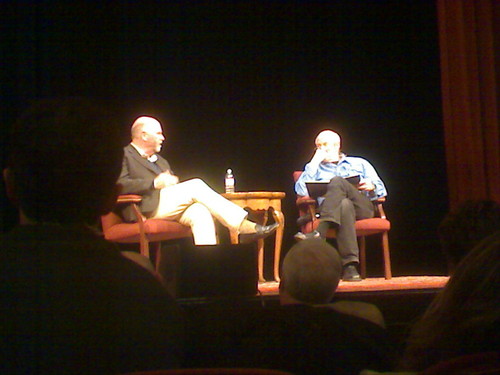
Time to get on the bus
Posted on Wednesday, February 27, 2008
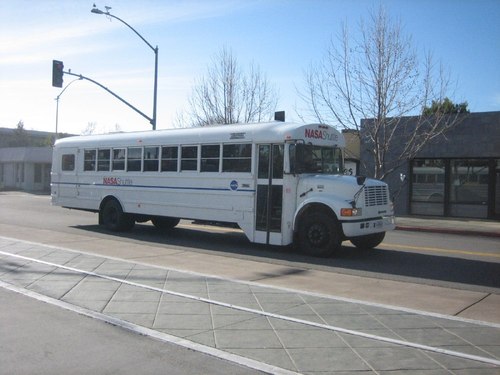
Ok, so its time to give a brief update on my (physical) whereabouts. Since last thursday I moved from Amsterdam to Mountain View, Silicon Valley to work with Chris Kemp and his collegues over at NASA Ames starting next monday March 3rd. Weehoo! Finally, a long held dream is coming true, taking part in the upcoming merger of outer space and cyberspace, right at the heart of where all things space are happening. Couldn't be better!
As for this blog, looks like I will be using it from now on to give you a personal insight in my personal and professional experiences here in the Valley. Sofar, these include a great arrival and first few days enjoying the Bay Area rainy season (yes, it can rain here...), a visit to the Vertical Motion Simulator on NASA Ames premises last friday (for photos have a look at this flickr album), my first NASA vrimibo with Ames director Pete Worden, Chris Kemp and several of my upcoming collegues (vrimibo is short for 'vrijdag middag borrel', Dutch for the traditional friday afternoon drink), a first counter-clockwise drive around the Bay Area, and writing off the first item on my wishlist of things-to-do-when-I-get-to-the-Bay-Area: attending a Long Now seminar in San Francisco (on which more in a follow-up post).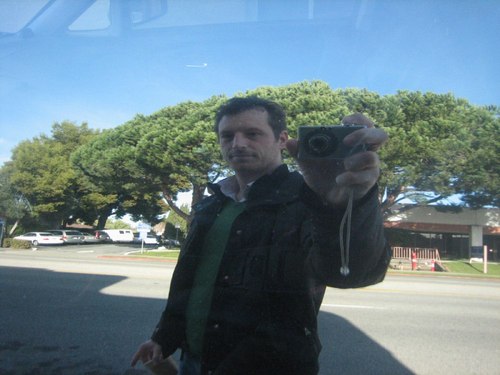
US Satellite shoot-down a success
Posted on Monday, February 25, 2008
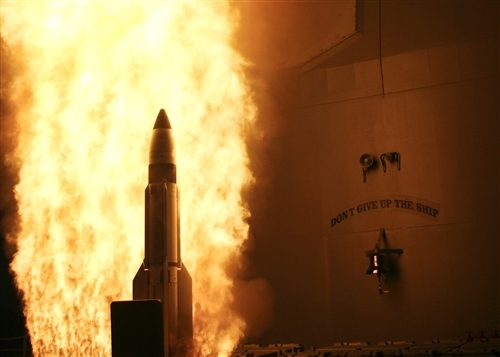
Enough has been written about the succesful shoot-down of the defunct NRO satellite last wednesday, so let me just chip in with above photo I found as part of a DoD photo essay of the event. Its a beautiful shot, almost surreal, reminiscent of the V2 and alike. Looking around, I am surprised to find the DoD New Media website is also surprisingly up to speed on web2.0 technologies, as below embedded video of the press briefing by General James Cartwright shows. Some of the clips run a slick CNN-like leader with the name 'The Pentagon Channel'...Interesting proposition...;-)
And the 14 Challenges go to...
Posted on Sunday, February 17, 2008
The Grand Challenges for Engineering in the 21st Century. These challenges have been announced Friday February 15th by a Committee including names like Kurzweil, Page, and Venter. Outer space is one of them, but only via the somewhat non-descriptive Challenge to 'Engineer the Tools for Scientific Discovery'. Cyberspace on the other hand gets its own Challenge to 'Enhance Virtual Reality'.
Columbus installed on ISS
Posted on Tuesday, February 12, 2008
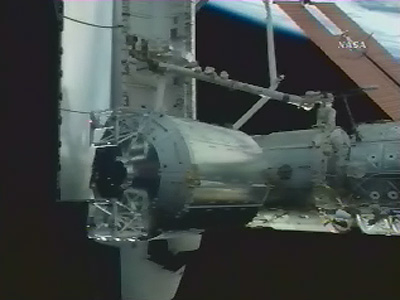
Strange...I thought it would be installed on the other side. This seems to be the place of the Japanese module KIBO. Well, at least the Shuttle docked at the right place. More at ESA.
IYA 2009
Posted on Tuesday, February 12, 2008
Not sure what the aliens are doing in below poster, but during 1 revolution around the Sun its International Year of Astronomy (aka IYA).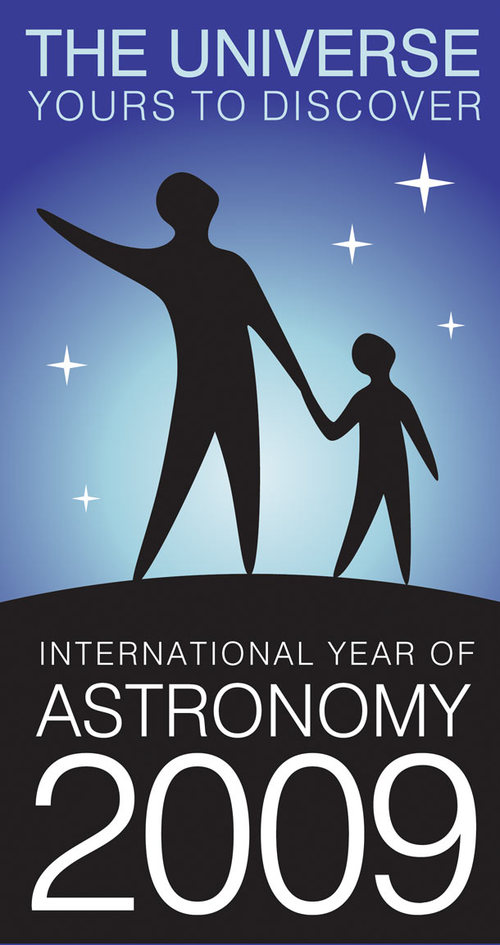
US space policy
Posted on Tuesday, February 12, 2008
The Space Review runs an article by Taylor Dinerman about US space policy and the challenges for the US space program with a new president coming onboard. The short article ends with the following reminder worth remembering:
Senior space policy expert John Logsdon said that for the next President, the critical moment will come in the fall of 2009 when he, or she has to make decision concerning the 2011 budget. That will be the moment when the US will truly decide if it wants to lead the way in space for the next twenty or thirty years, or not. If the President decides to retire the shuttle and go ahead with the full Constellation program, then the path will be clear; if not, then not only will China probably beat us back to the Moon, as Mike Griffin and Pete Worden have warned, but the US will lose years or maybe decades while it struggles to find a new vision to replace the one that was thrown away.
SpaceCollective.org
Posted on Monday, February 11, 2008

Techno utopianism lives on. Its been a while since we heard from Kurzweil, but I recently came across this website called spacecollective.org, set up by former country man Rene Daalder. From a first peek, it seems to be along the lines of what this blog is all about, that is, evolution of technology and the role of space in this evolution. Spacecollective.org seems to have a healthy critical stance, definitely worth a visit. I like the fact it originates from someone in the film industry, one of the main story telling industries out there and a long time passion of mine. Like the Peppers used to sing:
Space may be the final frontier
But it's made in a Hollywood basement.
Immersive Video
Posted on Sunday, February 10, 2008
Via OgleEarth, 360 degrees immersive video delivered to you through the Internet. Impressive. And shareable, like the ones here below (hint: drag the arrow inside the videoscreen).
Realtime news becomes programmable "LEGO"
Posted on Saturday, February 9, 2008
A good post over at O'Reilly Radar on the evolutionary nature of news agencies and the semantic web, carrying amongst others the following copy:
The end of benefits from decreasing the time it takes for news to hit the market. He describes the quest for zero latency in news, from the telegraph and early stock tickers and the news business that Reuters pioneered through today's electronic trading systems. (Dale Dougherty wrote about this yesterday, in a story about the history of the Associated Press.) As we reach the end of that trend, with information disseminated instantly to the market via the internet, he increasingly sees Reuters' job to be making connections, going from news to insight. He sees semantic markup to make it easier to follow paths of meaning through the data as an important part of Reuters' future.
and
What I think does ultimately matter is the ability of professional media to build specialized interfaces and vertical data stores that are suited to their niche, hopefully harnessing data and services from the consumer internet, and mashing them up with specialized, perhaps private, data stores. Put that together with metadata for programmable re-use, and you may really have something.
ISS from the ground (June 2007)
Posted on Friday, February 8, 2008
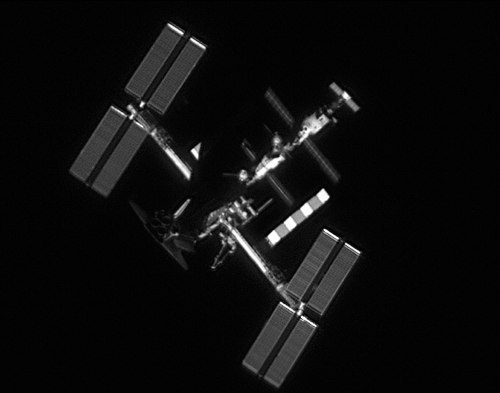
This images gives an idea of what it will look from the ground when the shuttle docks to deliver the Columbus module to the International Space Station in the days ahead. Not sure if the shuttle will dock at the front port btw cause that's where Columbus is supposed to go. (via ESA)
Columbus is in orbit
Posted on Thursday, February 7, 2008
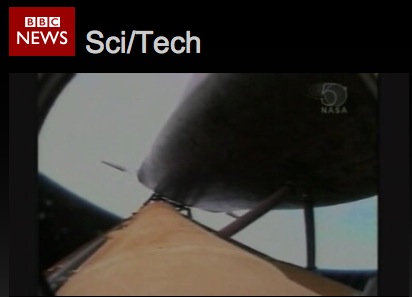
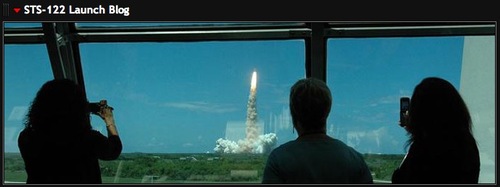
Congratulations to everybody involved!
More at:
NASA STS-122 blog
BBC news (10 min video)
NASA's Day of Remembrance
Posted on Saturday, February 2, 2008
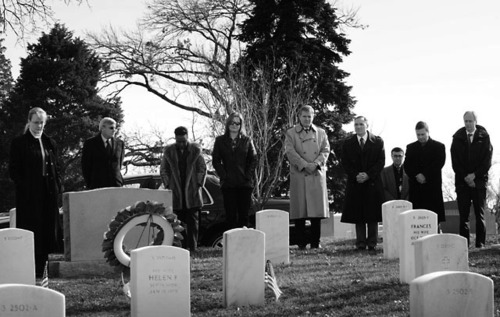
January 31st turns out to be NASA's Day of Remembrance I just found on this NASA page running the following copy:
NASA Deputy Administrator Shana Dale, left, and other NASA senior management participate in a wreath laying ceremony at Arlington National Cemetery as part of NASA's Day of Remembrance, Thursday, Jan. 31, 2008. The wreaths were laid in the memory of those men and women who lost their lives in the quest of space exploration, including the astronaut crews of Columbia, Challenger and Apollo 1.I am struck by the beautiful serene image accompanying the article. Hardly feels like the space imagery we are used to get from a space agency. (((Having watched a lot of Sopranos years ago, I feel my mind is already starting to spin all kinds of stories...)))
The future is process, not a destination
Bruce Sterling
Everything is ultimately becoming information technology
Ray Kurzweil
Data is the Intel inside
Tim O'Reilly
There is only one machine and the web is its OS
Kevin Kelly
The medium is the message
Marshall McLuhan
